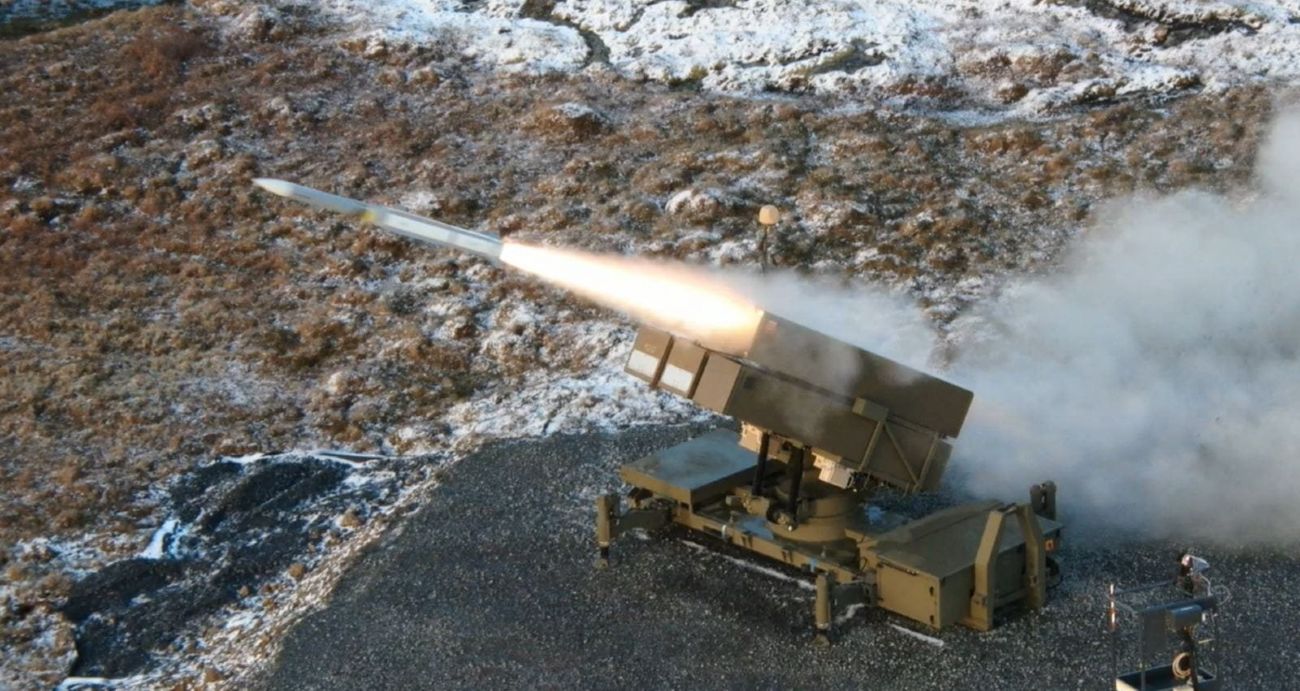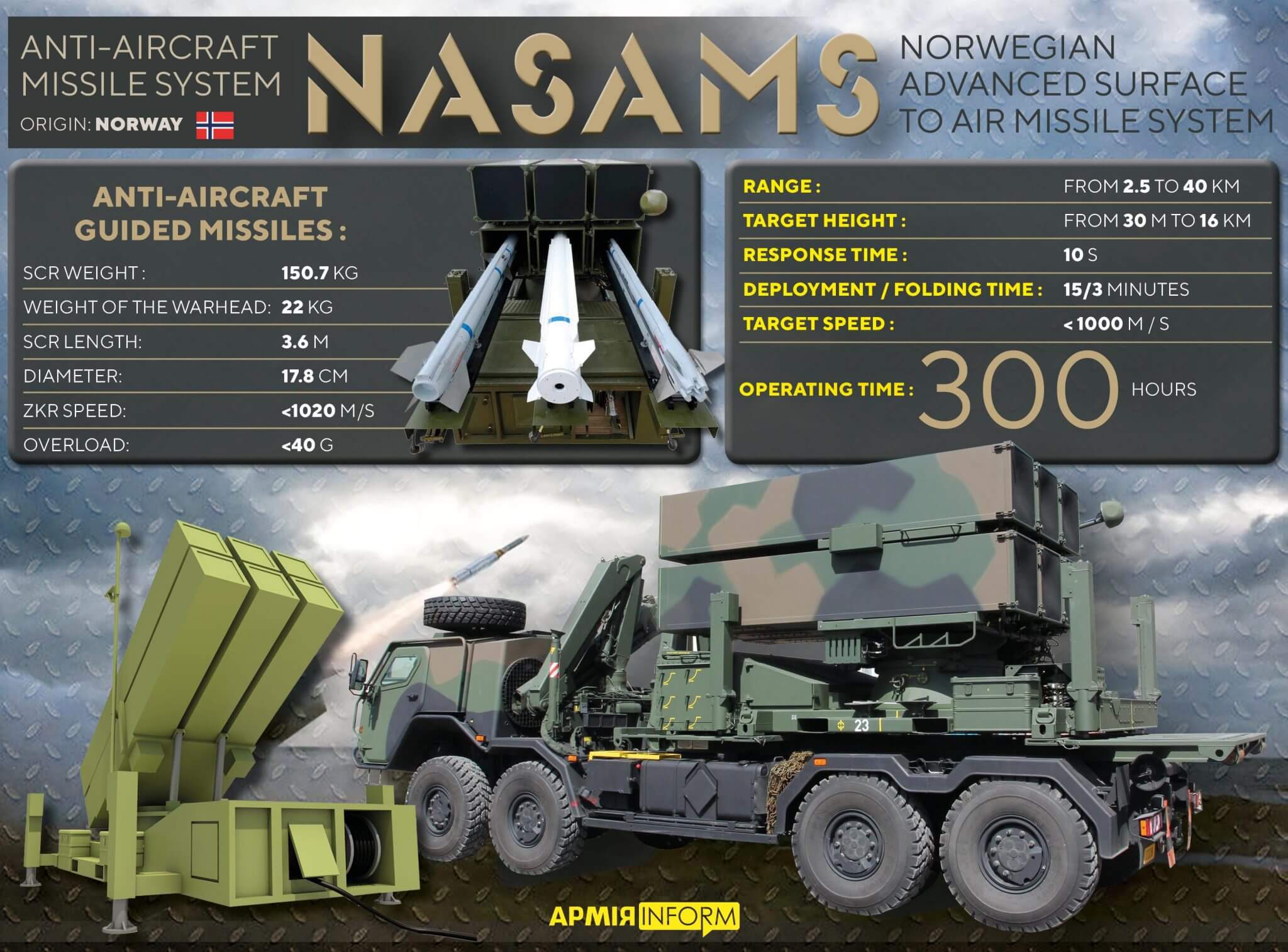Following the massive Russian attack on Ukrainian infrastructure targets on October 10 and 11, the US decided to rush NASAMS (National Advanced Surface to Air Missile System) air defense missile system to Ukraine. Many reports suggest that Kyiv could get NASAMS by the end of the month.
Ukrainian President Volodymyr Zelensky is upbeat about the impending arrival of the NASAMS, just as he was upbeat when other Western weapon systems arrived in the past, such as Stringer, Starstreak, Switchblade, M777, HIMARS, Harpoons, HARM, etc.
White House National Security Council spokesperson John Kirby told the press on October 12 that the US is speeding up the shipment of sophisticated NASAMS air defenses to Ukraine.
Russia has repeatedly used ground, air, and sea-launched cruise missiles to attack infrastructure, command & control center targets in Western Ukraine.
Terrain-hugging cruise missiles are difficult to detect and even more challenging to engage. They don’t fly straight to the target; they are routed through waypoints chosen to skirt enemy AD systems (radars, missile batteries, MANPADS) and confuse the defender about the eventual target.
The most effective and reliable defense against cruise missiles is a short-range target AD system like the Israeli SPYDER, Russian Pantsir, US NASAMS, and India’s QR-SAM.
NASAMS Strengths & Limitations
The NASAMS uses the AIM-120 AMRAAM air-to-air missiles adapted for ground launch. When launched from a fighter, the AMRAAM has high energy (speed & height) on launch. When launched from the ground, the AMRAAM has no energy on launch.
It has to climb and accelerate, expending its rocket motor fuel. As such, the range of the system is limited to around 30 kilometers. The system has no area defense capability.

The NASAMS is a point defense system developed to defend high-value targets. It is deployed around Washington, and at one point, India was set to deploy it around Delhi. (The Delhi deal likely fell through when MoD put missile systems on the import ban list.)
The NASAMS-2 variant, likely to be supplied to Ukraine, has a Link-16 data link. What that means is that the system needs no surveillance radar. It can be cued towards the target over a data link by an airborne surveillance asset.
To understand the significance of the Link-16 data link on NASAMS, we need to move a bit aside from the narrative.
NATO Surveillance Assets
The US and the UK have deployed airborne ISR assets to monitor Ukrainian territory and airspace. Aircraft participating in the 24×7 surveillance include:
-
USAF E-3 Sentry AWACS to monitor the airspace over Ukraine
-
USAF E-8 JSTARS for ground surveillance, battle management, and command and control aircraft
-
US Navy P-81 for SIGINT (Signal Intelligence) & Optical reconnaissance. (Remember how the IN Navy used its P-8I assets to monitor the PLA build-up in 2020, flying along the LAC),
-
US Army RC-12, for SIGINT
-
RQ-4D Phoenix for high-resolution synthetic aperture radar (SAR) and electro-optical/infrared (EO/IR) sensor-based surveillance. (The RQ-4D can survey as much as 40,000 square miles (100,000 sq kilometers) of terrain per day, an area the size of South Korea or Iceland.)
-
USAF RC-135S Cobra Ball to collect optical and electronic data on ballistic targets.
-
RC-135U Combat Sent to collect technical intelligence on adversary radar emitter systems
-
RC-135V/W for theatre lever SigInt. (Its sensor suite allows the mission crew to detect, identify and geolocate signals throughout the electromagnetic spectrum.)
During a media briefing on May 5, Pentagon Press Secretary John Kirby confirmed the US was providing “battlefield intelligence” to help Ukrainians defend their country.
Impact of US/UK Reconnaissance Assets
US ISR assets patrolling close to Ukraine are the single reason Ukraine is holding out against Russia. The assets provide Ukraine with a clear picture of the location of Russian forces and the deployment of Russian ground assets.
Using data from the ISR assets, Ukraine has been able to find gaps in Russian defenses and exploit them. The recent Ukrainian successes in the Kharkiv and Kherson regions wouldn’t have been possible without US ISR assets.
US E-3 Sentry likely detects and tracks Russian cruise missiles shortly after they enter Ukrainian airspace. Until now, Ukrainian ground-based AD weapons have not effectively leveraged the E-3’s ability to stream real-time targeting data on aerial threats to Ukrainian AD systems, which are not built to NATO standards.
When the NASAMS and German IRIS-T systems arrive, Ukraine can leverage the data streamed by E-3 aircraft over data links.

Russian Helplessness
Battles and wars are often won by outwitting the enemy, not by outfighting him. Outwitting the enemy requires good intelligence. Thanks to US ISR assets, Ukraine has good intelligence.
Russia’s intelligence-gathering capability, in comparison, is minimal. Its Tu-214R reconnaissance & SIGINT aircraft is roughly equivalent to the RC-135. However, Russia is known to have just 1-2 such operational aircraft. As such, they are incapable of maintaining a 24×7 vigil.
In addition, Russia uses Mi-8MPTR helicopters for intelligence gathering and EW. However, these are not theatre-level assets. Using them, Russia can best monitor Ukraine’s movements in East Ukraine.
However, given how Ukraine surprised Russia with its counter-offensive in Kharkiv, it can be easily concluded that Russian electronic eavesdropping capability in play is limited.
With its limited defense budget, Russia cannot afford a capability matching the US. Consequently, it has invested in developing long-range air and ground-based missiles that can take out adversary ISR assets.
The RVV-BD is one such missile. It has a range of 300 kilometers, weighs 500-kilogram, and features a 60-kilogram warhead! The missile combines data-link and inertial navigation for midcourse guidance. For terminal guidance, it uses jam-proof DRFM active radar homing. During the endgame, the missile is capable of 8g maneuvering flying at 6M!
As things stand, Russia is not attacking US/UK ISR assets because they are not flying in Ukrainian airspace, but that would change if NATO crosses a Russian red line.
Conclusion
NASAMS will no doubt increase Russian cruise missile losses. But since the NASAMS is a short-range system and infrastructure, command & communication targets are many, a considerable number of NASAMS would be required.
In some ways, the NASAMS sale is a US honeytrap. The system is very attractive but expensive. Once Ukraine invests in the system, it will have to keep increasing its investment to secure more and more assets.
NASAMS is likely being acquired to protect Ukrainian leadership and strong command and control centers, not infrastructure targets.
In the face of NASAMS deployment, likely, Russia will increasingly use a ballistic missile or Geran-2 suicide drones to hit infrastructure targets protected by NASAMS and IRIS-T. The Geran-2 drone has proved to be the joker in the pack.
It’s slow-moving but very low observable due to its small size, radar frequency, low observable shaping, and near absence of heat signature. If Russia can ramp up Geran-2 production to between 10-20 units a day, the Geran-2 will prove a game changer, NASAMS or no NASAMS.
- Vijainder K Thakur is a retired IAF Jaguar pilot. He is also an author, software architect, entrepreneur, and military analyst.
- Reach out to the author at vkthakur (at) gmail.com
- Follow EurAsian Times on Google News




